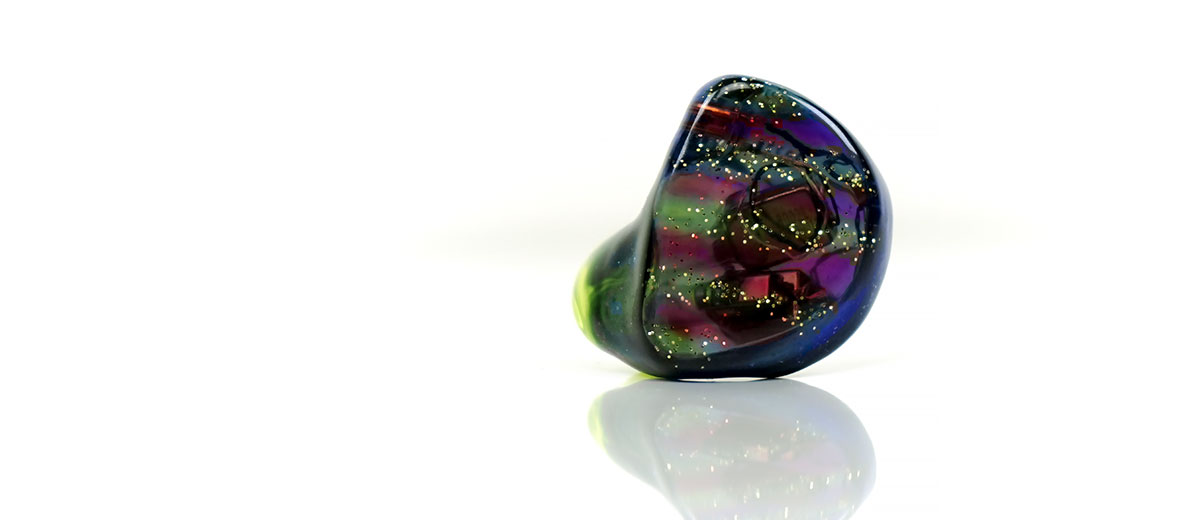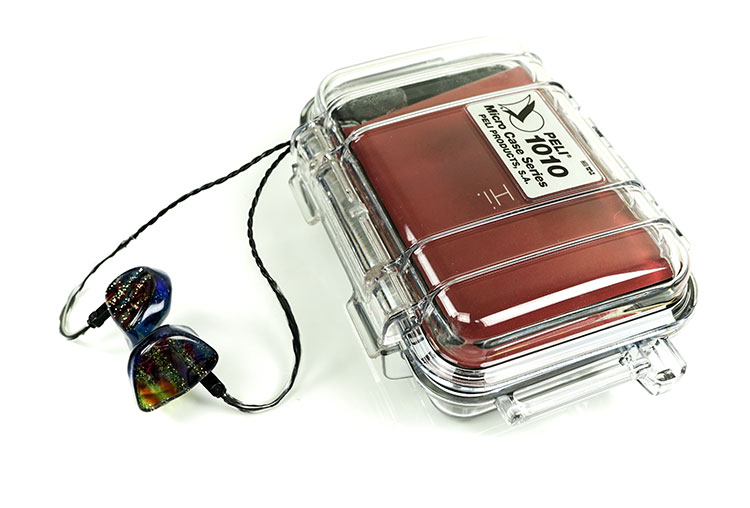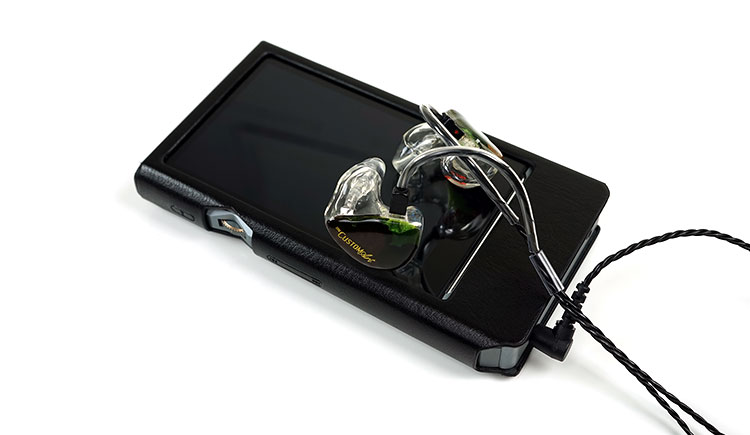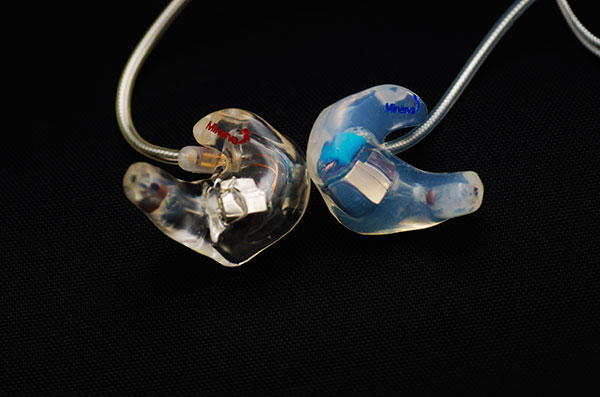Sound Impressions
Tonality & Presentation
The FIBAE 3 is a musical sounding presentation with some decent BA low-end power, an accentuated vocal presence topped by a bit of sparkle and energy in the final octave. It is fairly close to a well-defined W-shaped frequency response with that low-end custom BA driver driving some good power and presence sub-100Hz but not quite as thick or heavy sounding as the FIBAE 2 large CI driver.
Despite it’s tuning being tipped towards fun rather than neutral, it does not come across as an unbalanced presentation. In fact, it is rather balanced and smooth sounding to my ear. You can hear the extension and feel the sub-bass presence and the sparkle at the opposite end but neither is overcooked to the point where they dominate. Rather it creates a really nice harmonic balance particularly on instrumental timbre which stays smooth but avoids being ‘smoothed over’.
Soundstage
Staging on the FIBAE 3 is actually very good for a triple driver. The tuning has been very specific in edging up both ends of the frequency extension so there is more energy in its sub-bass and upper treble with some peaking even as high as 15K. A lot of BA designs tend to call it a day around 10-12k or earlier and focus also on a mid-bass hump and letting the midrange take front and center.
The elevated vocal range does skew the staging a little further forward though it avoids narrowing the stage too much. A slight drop in the lower mids prevents it from hogging up all the volume and killing the FIBAE 3’s headroom potential which is actually very good.
Bass
This is my own personal tuning preference. A slightly elevated sub-bass response that drops in a linear if somewhat nuanced fashion to around 800-1k delivering good but not earth-shattering low-end power and avoiding an overly warm mid-bass bias. That is not to say there is no warmth but it is second place to the sub-bass tuning which is about 2-3dB higher. As a result, the F3 can deliver a bit of pleasing power and good fundamentals and does not sound rolled-off.
The linear drop into the lower mids does carry a little warmth from the mid-bass but it not a muddy or soft sound. There is enough of a dip from around 100Hz onwards to retain a nice sense of clarity in lower-pitched instrumental timbre.
Mids
The FIBAE 3 has a little bump around 1-2k with a lower midrange response that dips a little from 500-1k and carries some low-end warmth with it. The lower mids are not hugely dipped though so there is some decent body and a natural to slightly warm sounding timbre.
Vocals are clear with good body and very smooth in their attack. You won’t find too much sibilance or sharp overtones in the performance of the FIBAE 3. Nor will you find it them lacking in detail or sounding honky.
Upper mids are just a little muted in comparison to vocal presence with the FIBAE 3 so instrumental positioning is just a little behind vocals on either side.
Treble
This is a very canny trebly tuning. Instead of going for perceived clarity and a slightly harder “more exciting” lower treble, CA have instead put the energy more into the mid to upper treble response of the FIBAE 3. This is anything but a harsh tuning with the energy and sparkle sitting just above that the sensitive 5-7k area and well into the final octave (above 10k).
It also adds a pleasing harmonic balance to the low-end power and warmth as well as ensuring there is no veil or too much softness to the signature The F3 upper treble tuning provides plenty of air and headroom which sometimes falls a bit short on lower treble dominant BA designs.
Matchability
Efficiency
The FIBAE 3 is rated at 7.3Ω (weighted) and 110dB which is highly efficient on paper. In reality, the FIBAE 3, like the previous FIBAE units, does require a little more gain for loudness though it can run quite easily from most sources including smartphones. Like the FIBAE 2, the FIBAE 3 is marginally easier on gain than the FIBAE 1 and gets louder marginally faster.
I suspect the loudness aspect and the higher gain required maybe something to do with attenuation as an integral part of the FIBAE technology. This is something I noticed with iFi IEMatch cables also. They are perfect for impedance matching but attenuate by up to 10dB. This operates in a similar manner though I can’t say how much it attenuates for sure but it is not huge.
Smartphones
If you are thinking of using a smartphone I can tell you it sounds excellent. Especially with the new audiophile orientated units such as the LG G6 and V20 as well as the ZTE Axon 7. I never got a sense that the FIBAE 3 sounded compressed or lacking in dynamic range even though it can scale with more powerful signals. The G6 was my preferred choice out of the 3 phones with it neutral to slightly bright presentation pairing well with the smoother flow of the F3 response.
DAPs
DAPs is where the sweet spot is though for the FIBAE 3. Like the F2 it can scale with a good source. With the AK380, for instance, it sounds more refined with better dynamics than our tested smartphones with a more resolving performance. Particularly in percussion which had a far more accurate timbre compared to the splashier LG G6.
You do not have to go all the way to TOTL DAPs though. The HiBy Music R3 and R6 are tailor-made for the FIBAE 3 both in terms of impedance matching (low-z accuracy) and tonality. You get plenty of detail and a bass signature that thickens but remains under good control. Importantly, the R6 will play accurate and true with FIBAE tech negating that 10Ω jack output impedance.
Noise
I rate the FIBAE 3 marginally the best performer of the three for noise though there is not much in it between all 3. Checking on previous sources for higher noise floors such as the X3iii I found the FIBAE 2 to exhibit a tiny trace of noise whereas the FIBAE 3 ran a bit quieter.
On portable tube amps such as the ALO Audio V5 all 3 will exhibit a tiny bit of background hiss and again the same pattern, FIBAE 1 and 2 just a little more hiss aware than the FIBAE 3. All three though I would not classify as sensitive to hiss in the same manner as the Empire Ears Zeus or Andromeda.
Impedance Testing
HiBy Music R6
This time we changed out the Shanling M2s for the even higher-rated HiBy Music R6 DAP which has a 10Ω output impedance rating. The ShR6 skewers the impedance curve on my low impedance IEMs.
The Andromeda gets brighter and leaner, the Meze 99 Neo loses a bit of bass and all sorts of issues with other IEMs without my ifi IEMatch cable to calm things down. In short, this is a bit of a crapshoot if you are using the DAPs such as the M2s and R6 because of the high output resistance.
Test Outcome
Comparing the performances of the R6 and the newer R3 which has an output rating of a very low <0.1Ω I got a similar tonal signature with the FIBAE 3 across the two sources.
Now do not mistake that as sounding the same. Both DAPs have their own unique sound signatures that do color it a little. Instead, the FIBAE 3 responded in the same manner across the two DAPS with no signs of Low-Z skew such as lean bass or overly bright highs.
Also, as mentioned I do believe there is some slight attenuation of volume using FIBAE tech that you will not get on other IEMs and matches my experience on the IEMatch cables. For that just turn up the dial by 1-2dB or more and you are good to go.
Select Comparisons
FIBAE 1
From €300
Technical
This was the launch IEM from CA for the FIBAE range and is their entry-level model. This is a single BA CIEM in acrylic only format, you cannot get it in a silicone finish. The FIBAE 1 is rated at 5.8Ω and 109dB so it is a little easier to power but the overall sensitivity level is ever so slightly lower.
Like the FIBAE 3, it will mean cranking up the volume a little with the FIBAE tech attenuating some gain but not by a huge amount. If anything, the FIBAE 3 is slightly louder at similar volume levels but just a little better at noise control.
Sound
The FIBAE 1 is more neutral-sounding than the FIBAE 3 with a more linear low end though it does have a nice focus on the mids and vocals. It also sounds very coherent and will suit those looking for a slight reference sound.
Unlike the F3, the F1 doesn’t have the same level of extension and presence on either end which is what I think really makes the F3 unique among the FIBAE range to date. The FIBAE 1 will stage a bit smaller and flatter as a result and does not have the same level of headroom.
FIBAE 2
From €475
Technical
The FIBAE 2 is the second custom in the FIBAE range and priced just a little higher with its dual BA design. The second BA is a huge CI driver from Knowles which puts a lot of weight in the FIBAE 2 low-end.
The FIBAE 3 use a different set of BA drivers to the FIBAE 2. The F3 does not use the bigger CI series Knowles driver for the low-end. Instead, it uses a custom unnamed driver for a slightly different signature.
Sound
The FIBAE 2 ratchets up the musicality a bit more than the FIBAE 3 which has a slightly better balance across the FR. The F2 and F3 have a similar level of reach in the low-end but the F2 hits harder and has more quantity of bass and does dominate the signature a bit more in that respect.
The F3 pulls back by a few dB but also pushes the mids and vocal presence a bit further forward making the mids of the F2 sound a little recessed by comparison. The F3 also has more air and energy in its top-end which creates a better harmonic balance whilst still sounding quite smooth. The F2 by comparisons falls away a bit earlier and sounds a bit darker in comparison.
Minerva Mi-Pro Artist
£385.00
Technical
This is a triple BA CIEM rated at 75 ohms and 122dB so its efficiency levels are pretty good though not as agile as the FIBAE 3. The ohm rating though is almost the complete opposite of the FIBAE range including the FIBAE 3.
What that means is the Mi is a good deal quieter on higher noise floors and will scale well with quality amping. However, weaker sources will sound a bit lifeless compared to the FIBAE 3 which will sound a good deal more consistent.
It not entirely suited to low powered smartphone amps in terms of resolution and dynamics. In fact, the impedance factor here plays a huge role sucking the Minerva of dynamics and sounding generally quite thin and tinny. Despite its higher sensitivity rating, it is the FIBAE 3 that gets louder faster and generally reacts better to weaker sources.
Sound
The Mi-Pro Artist is more of an n-shaped presentation compared to the W-shaped tuning of the FIBAE 3. The resolution on the Mi-Pro is good and the vocal presence is just as good as the FIBAE 3. If it is all about the midrange they are neck and neck. However, once you step outside then the FIBAE 3 edges ahead with better low-end extension and presence and far more top-end energy and air.
This affects the timbre a bit more with a little more snap and clarity, better harmonic balance and more space around the vocal delivery. The Mi-Pro lacks that air and low-end heft so it tends to come across as a little less dynamic and spacious in comparison.
Our Verdict
It is fascinating to see how the FIBAE range of custom monitors is growing from 1 driver upwards. It is even more interesting to see each hear a new spin in terms of tonality and presentation with each version.
The FIBAE 3 is the mature tuning to date for my money with a balanced yet smooth and involving presentation. I find it pretty cool that both the low-end and final octave deliver good energy for some superb harmonic balance without resorting to a V-Shaped response. The W-shape curve is perhaps most in tune with my own relaxed listening preference.
And the design. Dear Lord, is there no limit to Custom Art’s level of creativity? We are not talking a huge range of designs, but more out of the box thinking. The “Avatar” design is so cool, unique, and interesting that I am putting this in my top 5 “pimping” CIEMs ever seen in the office. All this for under $600? Incredible value.
FIBAE 3 Specifications
- Single proprietary Sub-Low, Single proprietary Full-Range, Single High
- 110dB @1kHz @0.1V
- 7.3 Ohm @1kHz (+-0.9 Ohm 10Hz-20kHz)
- 10Hz-21000Hz (+-20dB into IEC 60318-4 coupler)
- Silicone or Hollow Acrylic body







